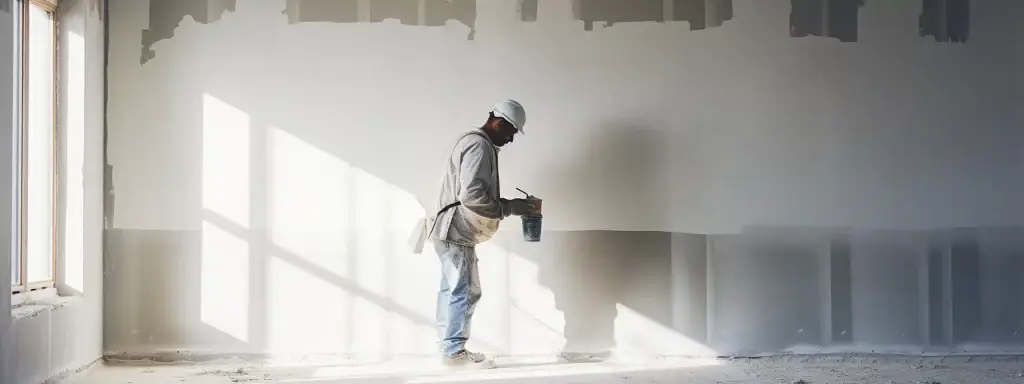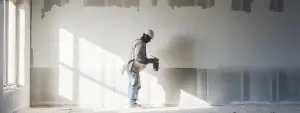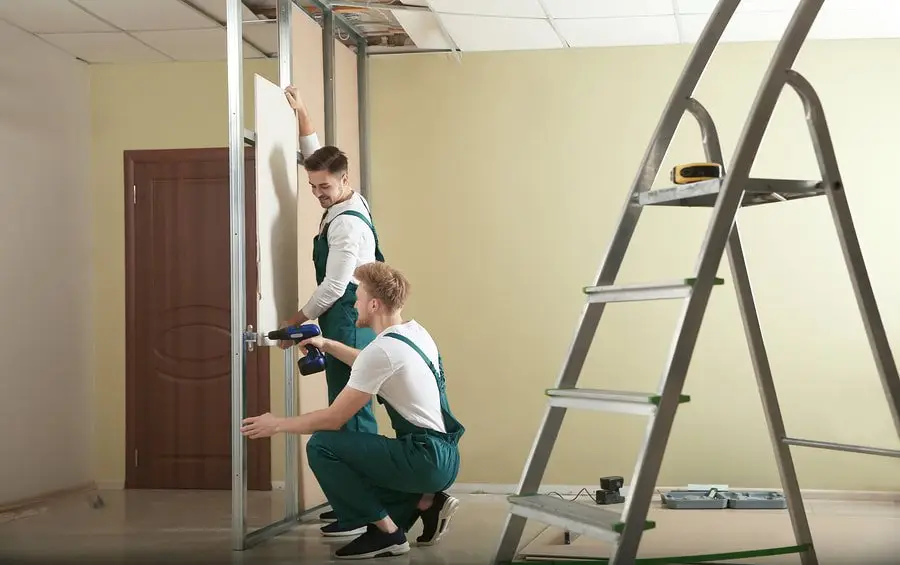What you should know about drywall estimates
Drywall installation can be a difficult and specialized trade. It requires thorough walkthroughs, formal inspections to make sure Jobsite risks have been mitigated for your customers’ safety as well as the quality of work with the labor involved in this process (which will depend on what service you provide). You also need an estimate that includes every detail before signing off; including any potential increases based on unforeseen circumstances during execution – but these are just some factors worth considering.
Square Footage
Drywall is measured by the square foot, not home size. When performing your initial walkthrough tour of the house measure all surfaces that will need drywall and record them carefully in order to get an accurate estimate of how much you’ll need.
Drywall is usually priced between $0.24 and $0.70 per square foot, but that doesn’t include the labor markup—it’s just an average price for drywalls alone!
A contractor’s price range can vary greatly depending on various factors like what type of material they are using or if there was any insulation work done at some point during construction; however average prices tend towards $1.50 – $3.00 per sqft.
The amount of drywall you will need will change from job to job. Drywall most commonly comes is 4X8′ (32 sq.ft) or 4X12′ (48 sq ft.) pieces.
To accurately measure how many pieces you’ll need, just take the total sq footage of the walls and ceilings and divide it by 32 or 48 depending on the size of your drywall sheet.
Drywall Types
Drywall comes in many different types, each with a specific price point. The cheapest type is standard 1/4” thick drywall which ranges from $0.24-$0.32/sq ft and goes up to 3/8″ at prices ranging from $0.27 cents – $0.41 per square foot (plus the cost of labor).
Moisture & fire-resistant panels start around $0.40, but soundproofing can be as expensive or more expensive depending on brand name
Drywall installation is a one-and-done task, so using an estimate building tool with customizable supplies and materials by type will be useful. Using specialized bidding software that does the math for you after selecting what items are being billed to your client in order to calculate markup prices based on supply costs only – without any additional labor or transportation fees added yet!
Types of Drywall Finishes
Drywall comes in five levels of finish (six if you count level 0). It is up to the client to decide which one they want for their home, but there are some general rules that should be followed.
The first three options can all be applied at different times depending on what will best suit your needs-
Level 1: being basic finishing using joint compound over exposed drywall joints
Level 2: Having tiling prepare surfaces before applying more layers with 3 heavy coats of glazing compound used for an even smoother surface
Level 3: Where panels receive a second coat to ensure a great look.
Level 4: The panels receive three layers of compound to prepare for painting or light texture.
Level 5: The highest level of finish. The panels get three layers of compound plus a skim coat. This is done to prepare for gloss-enamel paint or areas of severe lighting.
Additional Cost Factors
There are many different factors that can influence your price. This includes things like transportation to and from the job site, preparation work for foundation placement (site prep), any non-standard features such as curves or arches you might want installed in addition to debris removal which all cost additional money but is worth looking into when deciding on what kind of material best suits both design needs AND budget!
Labour Assessment
Drywall jobs can take crews of two, but if you’re working on a large project with many hours and need help from your friends or family members to get things done in time for them to go home then it might be worth bringing extra workers. Some reasons that having more hands is beneficial include:
- Helping maneuver all those pesky pieces into place;
- Assisting the group when hanging up their own personalized design creations
- Make cleanup easier by taking care of what needs cleaning at any one moment rather than spreading it across various spots throughout the site
- And being able to re-task yourself so no task feels too overwhelming
Conclusion
Hanging drywall is a job that should only be tackled by professionals like yourself. Before writing your estimate, there are several things you need to check first; make sure the square footage of space has been accurately calculated and determine what type (or thickness) variety suits the job best.
Assess what kind of finish you will be applying. Higher levels of finishes require more supplies, which can add up quickly! Make sure to account for this in your contract and estimate when double-checking the work yourself. Finally, make a list so that there’s never any confusion about what needs doing next on-site – after all, it takes only one detail/item left out at these steps before things go wrong very quickly during installation!




